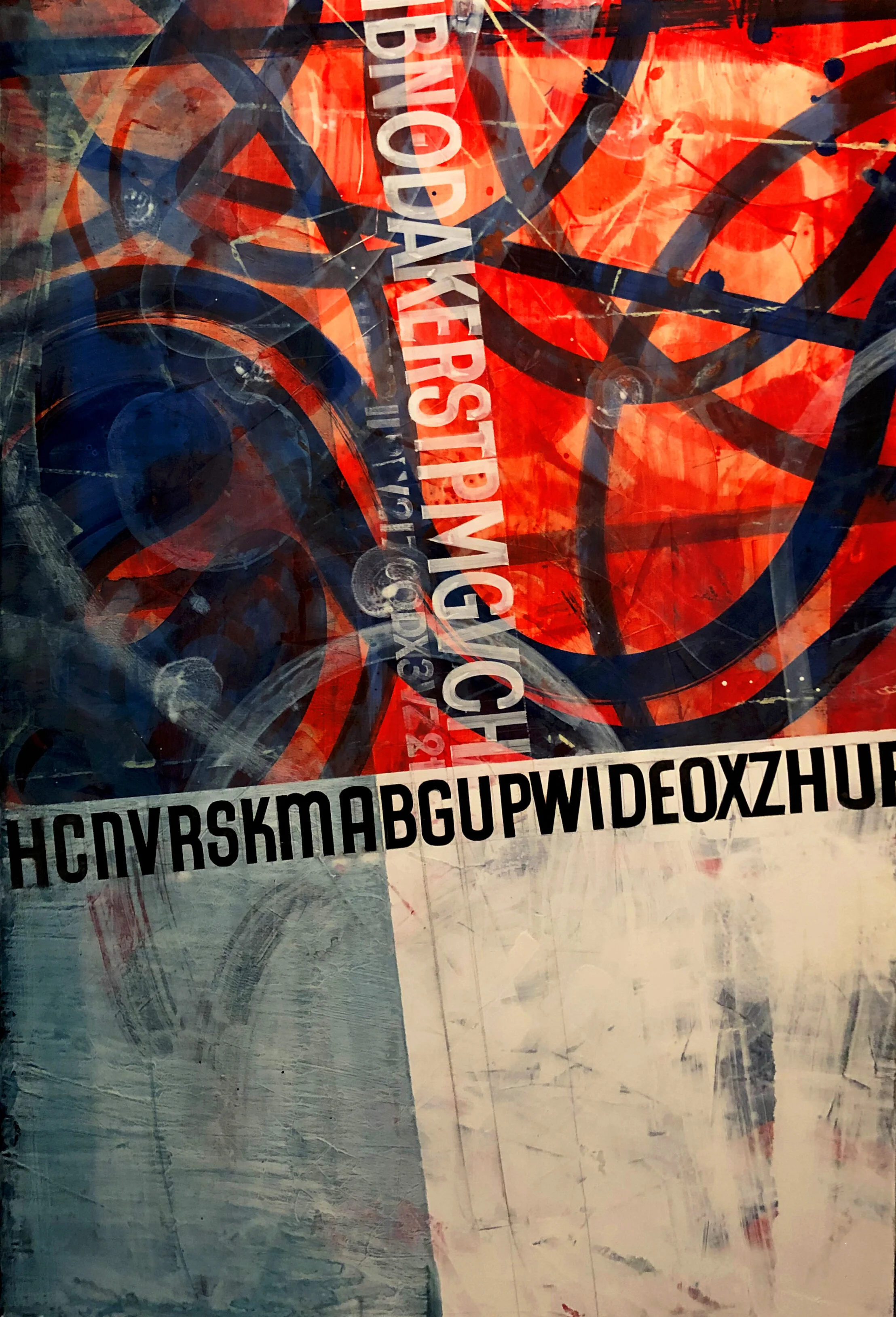Riff
Kenji Nakayama, Riff 2, commercial paint on hardboard
13FOREST Gallery is pleased to present Riff, the first solo exhibition of paintings by Kenji Nakayama to be shown in the United States in five years. With this body of work, Nakayama expands on abstract processes he had developed for his masterful 2014 Études series, and advances an endeavor to blend his fine art and commercial practices.
A sign painter by training, Nakayama's trade work is necessarily instructional and hand-rendered in fonts he invents to suit client needs. His studio work, though precise, is expressive, philosophical and open to the chance qualities of process and paint. In Nakayama’s past work he has used stencils to define the paradox of peace and beauty within urban alleyways and traffic-filled bridges. In his more recent Études he used a brush to envision each of the 49 days Buddhists believe a soul must travel before finding rebirth.
The paintings in Riff resulted from a long period of intensive commercial work, during which Nakayama sought fresh approaches to the laborious demands of sign painting. With accumulated insight, over the past year he returned to his artist studio to incorporate into abstract paintings the purely formal qualities of letters, not as bearers of meaning but as collections of line, shape and space.
Nakayama began each painting in this series by creating a background of broad, painterly brushstrokes. He then added letter forms, all of which he selected based on how they responded to the background composition and how well they fit together as visual sequences. The final, unbroken bands of letters do not read as lines of text; instead, they are reduced to basic compositional elements. Although Nakayama uses commercial lettering, he allows his brushstrokes to remain visible to reveal a hand-painting process he must conceal from his commercial work.
In addition to the paintings, Riff includes large collages of what began as Nakayama's hand-lettered practice sheets, which reveal the obsessive nature of his work as a sign painter. As assembled here, groupings of words encourage the viewer to read them as lists or sentences, but the incoherence of phrases they form undermines the process and shifts emphasis onto the letters’ integrity as aesthetic constructions.
The work in Riff began as a way for Nakayama to escape the all-consuming nature of his profession and utilize his considerable talent within an abstract, expressive context. Removed from the demands of clients and branding, this body of work is improvisational and intuitive while retaining a formal, graphic edge. As a meditative experiment, creating these paintings allowed the artist to challenge and examine his own artistic process, and to come to a deeper understanding of himself.
September 28 - November 16, 2019
Sat 10/5, 4-6 pm: Opening Reception
Fri 10/18, 6-8 pm: Outside|In - artist talk with Freedom Baird, Michelle Lougee and Katherine Shozawa
Sun 10/27, 4-6 pm: Día de los Muertos - installation by Nayda A. Cuevas and events throughout Capitol Square
Sat 11/2, 4-6 pm: By Hand - sign painting demonstration with Kenji Nakayama
Sat 11/9, 4-6 pm: Arlington International Film Festival post-screening reception
Outside|In is presented in cooperation with the Arlington Commission for Arts and Culture.
Preview Riff
About the Artist
Kenji Nakayama was born in Tomokomai on the island of Hokkaido, Japan in 1979. A mechanical engineer by education, Nakayama made a significant life change in 2005 with a move to Boston, Massachusetts to study traditional sign painting and to dedicate his time and energy to art-making. Nakayama's diverse practice ranges from careful pinstriping and gilded lettering to multi-layered stencil paintings; and from abstract representations of Buddhist traditional beliefs to constructions of words and letters stripped down to their essential physical forms. Meditation and highly-trained craftsmanship are hallmarks of Nakayama's work, which has been shown internationally and acquired by the collection of the Milwaukee Art Museum and the Four Seasons Restaurant in New York.
















